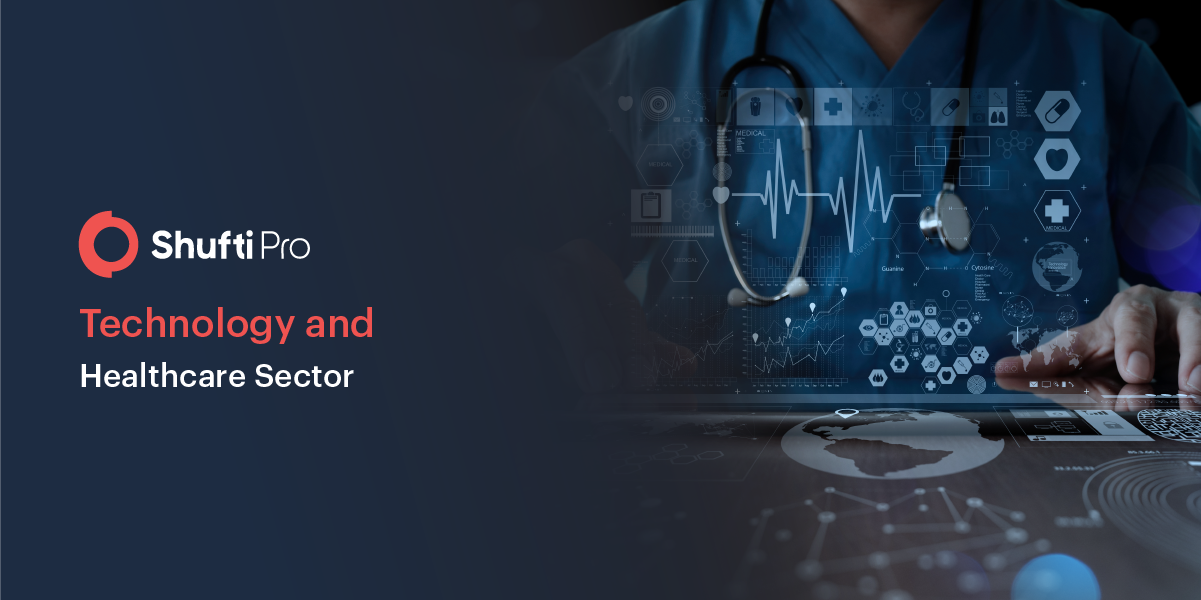Top 5 Technologies Disrupting the Healthcare Sector

Within the next five years, experts are anticipating major technological disruption in the 808 billion-dollar healthcare industry. Ever since the HITECH Act of 2009 came into effect, medical records have become available online, patient identity verification has become a common notion, and remote medical assistance has become a reality. With traditional healthcare systems becoming a thing of the past, here are the top five disruptors set to change the medical infrastructure in the years to come.
What Does HITECH Compliance Mean for the Healthcare Industry?
The Health Information Technology for Economic and Clinical Health (HITECH) Act directs all healthcare institutions to adopt Electronic Health Records (EHR) and improved privacy and security protections. For HITECH compliance, EHR must be implemented for recording prescriptions, supporting clinical decisions, and tracking patient records among other cases.
1. Internet of Things
From making diagnoses to prescribing drugs, medical data must be recorded. To streamline the collection and analysis of healthcare records, the Internet of Things (IoT) is playing a key role.
In layman terms, the IoT concept refers to the network of “things” (devices) connected over the internet for the purpose of connecting and transferring data. In the healthcare space, IoT devices are utilized for enhancing decision-making through accurate data collection and exchange in real-time. This allows practitioners to stay in touch with patients even after they are discharged from a hospital. Continuous monitoring of blood glucose levels and transferring data from an ambulance to the hospital are some examples of situations where IoT devices are used. Due to the increasing institutional interest in this technology, the IoT industry is expected to become a USD 561 billion market by 2022.
2. AI-powered Identity Verification Solutions
A major concern for industries worldwide is data security, and the healthcare sector is no exception. The HITECH Act, enforced in 2009, encouraged medical professionals to adopt electronic health records and improved privacy and security protections to secure healthcare data. However, the information available online makes it easier for identity thieves to target confidential details, causing a major challenge for both the providers and the patients.
Patient identity verification solutions combine the capabilities of Artificial Intelligence (AI) and biometric technology to create a fool-proof method of securing online data. These solutions require patients to submit their government-issued ID documents along with a corroborating selfie to have their identity verified in real-time. As a result, minors accessing prescription drugs and fraudsters using fake identities are detected within minutes. Another key benefit of this software is that patient ID verification solutions are adopted to streamline KYC compliance in healthcare.
Suggested Read: Know Your Patient: Anti-Fraud Pill for Healthcare Industry
3. Augmented Reality
One of the latest innovations in the healthcare sector is Augmented Reality (AR). It involves the use of specific sensors, cameras, and displays, enabling the healthcare provider to interact and visualize the 3-D representation of the patient’s body. By interacting with the patient’s environment more realistically, complicated surgeries, CT scans, MRI scans, and other procedures become easy to assess.
A real-world application of AR technology is vein visualization. A hand-held AR device enables the practitioner to detect the exact location of the patient’s vein, increasing the first-attempt accuracy during blood tests. As more practical use-cases of this technology are being introduced in the healthcare sector, the global market size of AR in healthcare is projected to reach USD 4,237 million by 2026, up from USD 609 million in 2018.
4. Robotics
Robotics is among the fastest growing technology in the healthcare sector. From surgical equipment to disinfectants, the industry is employing robotics in every field. Precise diagnosis, accuracy, automated systems, and streamlined daily tasks are some of the benefits of robotics in the healthcare sector. Companies are striving harder every day to provide the healthcare sector with robotics so the industry can grow at a faster pace.
Luvozo created a robotic concierge named Sam and tested first in a leading senior living community in Washington. The robot combines cutting-edge technology and human touch for check-ins and non-medical care for patients. Henceforth, cost is reduced while patient satisfaction increases.
5. Blockchain
The US is expected to invest 20% of its GDP on healthcare sector in the future. Blockchain is a database technology that uses encryption and other security measures for storing data and link it in a way that enhances usability and security. Blockchain-based system empowers patients to have full control of their data.
BurstIQ is a an application that allows easy management of massive amount of patient data. The blockchain technology enables secure sharing of data according to the HIPAA rules.
Key Takeaways
In a nutshell, technology has disrupted every industry across the globe. When it comes to the healthcare sector, the top five technologies disrupting operations include artificial intelligence, augmented reality, blockchain, robotics, and Internet of Things (IoT). In the next few years, industry experts are expecting a fully automated health sector. Ever since the HITECH Act of 2009 came into effect, medical records have become available online, patient identity verification has become a common notion, and remote medical assistance has become a reality.










